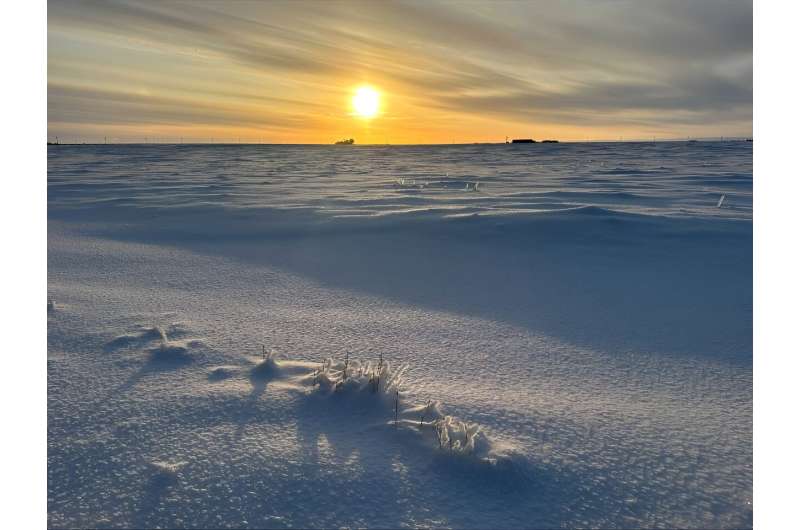New Discoveries Unravel the Mystery of Arctic Warming

January 11, 2024
This article has undergone a thorough review in line with Science X's editorial process and policies. These reviews are conducted by editors to provide credibility and focus on the following areas:
- Fact-checked
- Peer-reviewed publication
- Trusted sources
- Proofread
Credit given to Kenny Vigil from Sandia National Laboratories
The Arctic region, often referred to as earth's icy crown, is facing a climate crisis unlike any other part of the world. It's experiencing a rapid rise in temperature, approximately four times faster than the global rate. Scientists at Sandia are closely studying the reduction in sunlight reflectivity (or albedo), a contributing factor to the accelerated warming in the Arctic.
These scientists are using data from GPS satellite radiometers rather than conducting physical field studies. The data represents the sunlight reflected off the Arctic, providing critical information related to Arctic amplification.
Their findings are published in the journal Scientific Reports.
Erika Roesler, a scientist at Sandia specializing in atmospheric and climate science, has expressed both scientific curiosity and serious concern about the drastic changes in the Arctic landscape, leading to crucial questions about what's causing these changes.
Prior studies have hypothesized that the feedbacks from sea-ice albedo might be the primary drivers for Arctic amplification. There are two main areas of albedo feedback: the overall reduction in sea ice leading to a darker ocean surface absorbing more sunlight and increasing temperatures, and the localised sea-ice albedo changes due to melt water puddles on ice.
Seeking a clear understanding of the drop in Arctic reflectivity, senior scientist Phil Dreike acquired permission from the U.S. Space Force to analyze yet-to-be-published data from the radiometers on GPS satellites.
Roesler stated the rarity and value of climate data sets, as qualifying as such requires observations over many years, an element often missing from smaller science projects.
An analysis of the data from 2014 to 2019 was conducted by Amy Kaczmarowski, an engineer at Sandia.
Kaczmarowski noted that the comprehensive examination of yearly changes in the Arctic region is unique, as previous studies have been focused more on local measurements and theoretical discussions regarding the effect of puddling water on ice albedo.
She further revealed a shocking 20-35% decrease in total Arctic reflectivity during the summer, attributed to fully melted ice according to the same period's microwave sea-ice extent measurements.
The remaining loss in reflectivity was likely due to the weathered remaining sea ice. Kaczmarowski highlighted the significant reduction in reflectivity caused by weathered ice, referring to thinner and ponded sea ice.
It is anticipated that the GPS satellites will keep providing data until 2040. The researchers from Sandia are optimistic their findings will be used by other scientists in their Arctic amplification models. They intend to keep extracting data from GPS satellites and are open to collaborations for further analysis.
'We aim to use this data for various regions on earth for climate-related studies,' says Kaczmarowski.
Journal information: Scientific Reports
Source: Sandia National Laboratories




